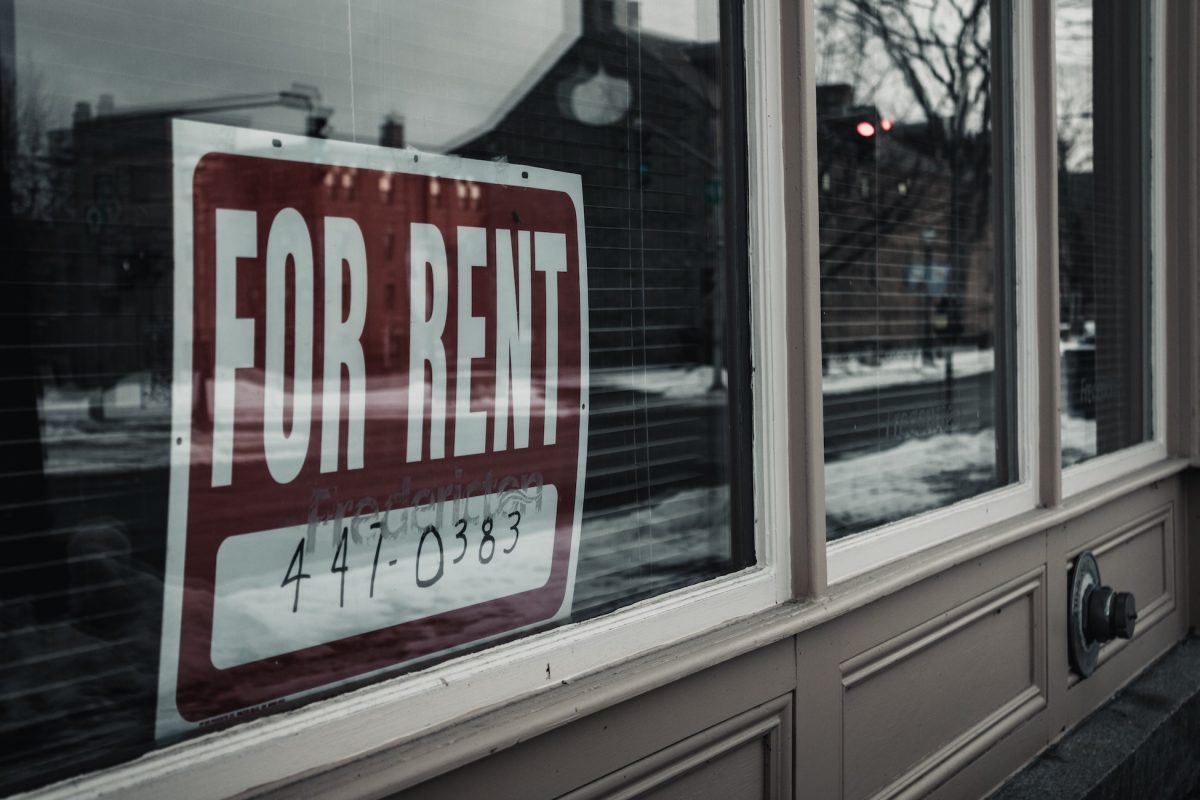Picture this: you’re juggling student loans, credit card bills, and the ever-looming specter of bad credit—while trying to maintain a social life, hustle at work, and keep up with the latest memes. Welcome to the chaotic, yet oddly exhilarating world of debt consolidation loans for bad credit. This guide is your ultimate survival kit, crafted with a generous dose of humor and real talk for every millennial and Gen Z warrior out there. Buckle up as we explore everything you need to know about debt consolidation loans, reveal how they work, and arm you with tips to secure the best rates—even when your credit score isn’t exactly glowing.
Best Debt Consolidation Loans for Bad Credit: Everything You Need to Know Table of Contents
What Are Debt Consolidation Loans for Bad Credit?
The Debt Dilemma: Why So Many of Us Struggle?
Breaking Down Debt Consolidation Loans: The Essentials
How Do Debt Consolidation Loans Work for Bad Credit?
Debt Consolidation vs. Debt Management: What’s the Big Difference?
Factors That Affect Your Loan Terms and Interest Rates
Tips for Securing the Best Debt Consolidation Loans for Bad Credit
Navigating the Application Process: What You Need to Know
Real-Life Success Stories: From Financial Chaos to Control
Resources and Community Support: Your Next Steps
Building Your Personalized Financial Roadmap
Your Journey to Financial Empowerment
Frequently Asked Questions About Debt Consolidation Loans for Bad Credit
What Are Debt Consolidation Loans for Bad Credit?
Debt consolidation loans are essentially the financial equivalent of flavoring your ramen with gourmet ingredients. Instead of keeping multiple debt streams—each with its own obnoxious interest rate and repayment schedule—you combine them into a single, manageable loan. When you have bad credit, it might feel like all the financial doors are slammed shut, but guess what? Debt consolidation loans are designed to help you regain control of your finances, streamline your monthly payments, and, potentially, secure a lower interest rate.
Think of it as tidying up your financial closet: instead of rummaging through a mess of unpaid bills and overdue loans, you get to sort them into one neat package. It’s a game-changer for anyone looking to get a grip on their financial chaos, even if your credit history screams “bad news!”
The Debt Dilemma: Why So Many of Us Struggle?
Let’s get real. Millennials and Gen Z faced an avalanche of financial challenges starting from student loans to skyrocketing living costs, and let’s not even talk about the era-defining economic crises. With a patchwork of debts from credit cards, personal loans, and even some sneaky payday loans, it’s no wonder that achieving that elusive financial stability feels like chasing a unicorn.
Bad credit can result from a series of missteps, unexpected life events, or the inability to catch a break in a complex financial environment. The good news? Consolidating your debts isn’t about hiding your past mistakes—it’s about creating a road map to a better financial future.
Breaking Down Debt Consolidation Loans: The Essentials
Let’s dive into the nuts and bolts. Debt consolidation loans work by rolling multiple debts into one lump sum. Instead of keeping track of different due dates and juggling various interest rates, you’re left with a single monthly payment. This simplification not only makes budgeting easier but can also reduce the overall cost of your debt if you secure a lower interest rate.
Here’s how it plays out:
- Single Payment, One Interest Rate: Combining all your debts means you deal with one interest rate, making your financial life less of a circus.
- Simplified Budgeting: A single monthly bill makes it easier to track spending and avoid the headache of multiple due dates.
- Potential Savings: Even if your interest rate isn’t as low as you’d like (thanks to bad credit), there’s still a chance you’ll end up paying less overall as you simplify your repayment schedule.
While debt consolidation loans won’t magically fix your credit score overnight, they offer a practical pathway to streamlining your finances and potentially setting the stage for future credit repair.
How Do Debt Consolidation Loans Work for Bad Credit?
At its core, a debt consolidation loan for bad credit is designed to lump together high-interest debts into one manageable loan. But here’s the catch: when your credit is less than stellar, lenders might charge you higher interest rates or require additional fees compared to borrowers with a pristine record.
The process usually looks like this:
- Application: You fill out an application detailing your debts, income, and financial history.
- Approval: The lender reviews your application and decides whether to approve your loan. With bad credit, you may need to shop around to find a lender who specializes in high-risk loans.
- Disbursement: Once approved, the lender pays off your individual debts, and you’re left with a single loan.
- Repayment: You start making one monthly payment based on the consolidated loan’s terms—ideally, one that’s lower than the sum of your various payments.
The key is to compare offers carefully—look at interest rates, fees, and repayment terms to ensure you’re not trading one problem for another.
Debt Consolidation vs. Debt Management: What’s the Big Difference?
With all the buzz about debt solutions, you might wonder how debt consolidation stacks up against other strategies like debt management plans (DMPs). Let’s break it down:
Debt Consolidation Loans
These loans let you combine several debts into one, giving you a single payment schedule. The benefit? It simplifies your financial obligations and might secure you a lower interest rate—even if your credit isn’t perfect.
Debt Management Plans (DMPs)
DMPs are typically coordinated through credit counseling agencies. Instead of taking out a new loan, you work with a counselor who negotiates lower interest rates or reduced payments with your creditors. You then deposit a fixed amount each month, which the counselor distributes to your creditors. DMPs are great if you need structured guidance, but they can sometimes affect your credit score in a different way than consolidation loans.
In essence, if you prefer a one-stop financial fix and are confident in taking on a new loan—even with bad credit—that’s your jam for debt consolidation. If you’d rather have a professional handle negotiations, then a debt management plan might be a better fit.
Factors That Affect Your Loan Terms and Interest Rates
When it comes to debt consolidation loans for bad credit, several factors influence the terms you’re offered:
- Your Credit Score: Even if it’s on the lower side, your credit score is a key indicator for lenders. A higher score increases your chances of getting a lower interest rate.
- Your Income: Proof of steady income acts as a lifeline. It tells lenders you’re capable of making that singular monthly payment.
- Your Debt-to-Income Ratio: This ratio helps lenders assess how much of your income is already tied up in debt. The lower, the better.
- Repayment Term: Longer repayment terms might lower your monthly payment, but they can also mean paying more in interest over time.
- Fees and Penalties: Many consolidation loans come with origination or processing fees. Always read the fine print!
It’s a balancing act: you want manageable payments now without saddling yourself with excessive fees or interest that could prolong your debt nightmare.
Tips for Securing the Best Debt Consolidation Loans for Bad Credit
Alright, financial gladiators, here are some practical and refreshingly honest tips to help you secure the best possible loan, even with bad credit:
1. Shop Around, Don’t Settle Down
Resist the urge to sign on the dotted line with the first lender you find. Compare multiple offers from banks, credit unions, and online lenders. Each lender has its own criteria, and a bit of research could land you a more favorable rate.
2. Consider a Co-Signer
If you have a friend or family member with good credit who’s willing to co-sign, it could substantially improve your loan terms. But remember, this is a serious favor—they’re on the hook if you default.
3. Improve Your Credit Score
While it might be tempting to jump headfirst into consolidation, take a moment to address any discrepancies on your credit report. Even slight improvements can positively impact the interest rate you’re offered.
4. Keep an Eye on Fees
Be vigilant about any hidden fees—origination fees, prepayment penalties, or processing fees. Sometimes the overall cost of the loan could outweigh its benefits.
5. Set a Realistic Repayment Plan
It’s vital to ensure that the monthly payment is something you can stick to, even if it means extending the term a bit longer. Create a budget that prioritizes these payments while still allowing you a little wiggle room for life’s little surprises.
6. Utilize Comparison Tools and Reviews
Online comparison sites and customer reviews are invaluable. They give you a peek into other borrowers’ experiences—which can sometimes be more enlightening than the glossy pages of marketing brochures.
The journey to financial stability through debt consolidation might seem daunting with bad credit as a barrier, but with smart strategies and a bit of research, it can be a transformative solution.
Navigating the Application Process: What You Need to Know
Let’s talk about the not-so-glamorous side of securing your debt consolidation loan: the application process. Think of it like an audition for a role in your own financial success story. Here’s how to nail it:
Gather Your Financial Docs
Before you apply, make sure you have all the necessary documentation on hand. This typically includes pay stubs, bank statements, tax returns, and a comprehensive list of your debts. The more organized you are, the smoother the process will go.
Complete the Application Form
Whether you’re applying online or in person, accuracy is key. Double-check your information—mistakes can delay your approval or even result in a rejection. It might be a bit of a paperwork drag, but it’s worth it to avoid future hassles.
Watch Out for Hard Inquiries
Multiple hard inquiries can ding your credit score further. Limit your applications to a short time frame so that any credit checks count as one composite inquiry. This little trick can help minimize the damage.
Negotiation is Not Taboo
If you’re a bit of a negotiator, don’t be afraid to ask about fees or see if there’s any wiggle room on the interest rate. Sometimes, simply asking can result in a better deal.
It might feel like jumping through hoops, but the peace of mind that comes with a consolidated, manageable debt payment schedule is a prize well worth the effort.
Real-Life Success Stories: From Financial Chaos to Control
Nothing motivates like a good success story. Let’s take a look at some real-life examples from folks who turned their debt turbulence into smooth sailing.
The Comeback Kid
Jasmine, a 28-year-old freelance designer, was drowning in credit card debt after several unexpected medical bills. With a credit score that left her feeling embarrassed at family gatherings, her options seemed limited. After a thorough search, she found a lender specializing in debt consolidation for bad credit. By refinancing her debts—even if the interest rate was a tad higher than ideal—she managed to reduce her monthly payments by 30%. Today, she’s not only paying off her consolidated loan, but she’s also started a budgeting blog to help others in similar situations.
The Budgeting Boss
Meet Alex, a 32-year-old tech support professional whose life was spiraling thanks to multiple unsecured loans and a car loan with overwhelming interest. Determined to take charge, Alex opted for a debt consolidation loan. With a newly structured single payment plan, he was able to avoid the late fees and penalties that once plagued his account. Alex’s renewed focus on budgeting and financial education allowed him to eventually refinance his loan to an even better rate—transforming him into an inspiration for his social media followers.
From Overwhelmed to Overachiever
Sarah’s story is a testament to perseverance. After years of juggling student loans and credit card debt, her credit score had taken a nosedive. With mounting pressure and no clear solution, she reluctantly sought out a debt consolidation loan. Though the journey was challenging, she eventually mastered the art of prioritizing debt reduction. Today, Sarah not only boasts a steadily improving credit score but also mentors other young professionals on how to navigate the tricky waters of bad credit.
These stories aren’t just feel-good narratives; they’re blueprints for financial recovery. With the right strategy and a dash of determination, debt consolidation can be a powerful tool even in the toughest credit scenarios.
Resources and Community Support: Your Next Steps
Financial challenges can feel isolating, but you’re not alone in this journey. There are countless resources and communities dedicated to helping you rebuild your financial life. From online forums brimming with budgeting hacks to in-person financial counseling sessions, the support is there when you need it.
Consider exploring free financial literacy courses, joining social media groups focused on debt recovery, or even tapping into local nonprofit organizations that offer credit counseling. These communities not only provide tips and tricks for managing debt but also serve as a reminder that many others share your struggles—and have emerged stronger on the other side.
Remember, reclaiming your financial freedom isn’t an isolated endeavor—it’s a vibrant, collective effort. So, lean on the community, ask questions, share your experiences, and know that every step forward is a step toward a brighter financial future.
Building Your Personalized Financial Roadmap
Now that you’ve gathered the knowledge and inspiration to tackle debt consolidation head-on, it’s time to craft your own personalized financial roadmap. Much like planning a road trip, you need to know your starting point, your destination, and the best routes in between.
Step 1: Assess Your Financial Situation
Begin by taking a hard look at your current financial state. List all your debts, calculate your monthly obligations, and determine your credit score. This honest self-assessment is crucial—it sets the stage for a realistic, effective consolidation plan.
Step 2: Set Clear Financial Goals
What do you want to achieve? Whether it’s lowering your monthly payments, eventually buying a home, or simply gaining peace of mind, setting short-term and long-term goals will serve as the beacon guiding your efforts. Write them down, create a vision board, or even share them with a trusted friend—it reinforces your commitment.
Step 3: Explore Your Options
Once you know where you stand, it’s time to dive into the world of potential loan options and lenders. Compare interest rates, fees, and repayment terms. Leverage online tools, read customer reviews, and don’t hesitate to ask questions. In the quest for financial clarity, knowledge truly is power.
Step 4: Develop a Budget and Payment Plan
Creating a realistic budget that prioritizes your consolidated loan payment is essential. Factor in your monthly income, fixed expenses, and discretionary spending. This blueprint will help you understand how much extra you can allocate toward accelerating your repayment.
Step 5: Implement, Monitor, and Adjust
Financial plans are living documents. Once you’ve set your roadmap in motion, keep an eye on your progress. Monitor your monthly statements, track improvements in your credit score, and adjust your strategy as needed. Remember, flexibility is key—if an unexpected expense arises, recalibrate rather than derail your entire plan.
By designing a personalized financial roadmap, you’re not just addressing your current debt issues—you’re building a resilient foundation for future financial decisions. It’s about taking back control and steering your life in the direction you’ve always dreamed about.
Your Journey to Financial Empowerment
With a clearer understanding of debt consolidation loans tailored for those with bad credit, you’re now armed with the tools to tackle your financial challenges head-on. This isn’t just about consolidating debt—it’s a transformative journey toward reclaiming your power and reshaping your financial destiny.
Every step you take—from researching loan options to engaging with supportive communities—is a declaration of your commitment to financial wellbeing. Embrace the process, even when it means sifting through fine print or enduring a few rejections along the way. Each hurdle you overcome builds your resilience and sharpens your financial acumen.
Think of this guide as your trusty sidekick in an epic quest for financial freedom. It’s packed with actionable insights, real-life examples, and plenty of humor to remind you that while the road to recovery may be bumpy, it’s also filled with opportunities to learn, grow, and ultimately thrive.
So here’s to a future where your finances work for you, not against you—a future where the weight of multiple debts is replaced by a single, manageable plan and a newfound confidence in taking control of your financial life. Step into the light, lean on the knowledge and support you’ve gained, and let your journey to financial empowerment begin!
Frequently Asked Questions About Debt Consolidation Loans for Bad Credit
We get it—navigating the world of debt consolidation loans can be as confusing as trying to decode the latest social media trend. Here are some of the most frequently asked questions to help clear up any doubts.
1. What exactly is a debt consolidation loan?
A debt consolidation loan allows you to combine multiple debts into a single loan with one monthly payment. The aim is to simplify your financial obligations and potentially secure a lower overall interest rate—making your repayment process much easier to manage.
2. How does bad credit affect my chances of getting a debt consolidation loan?
With bad credit, lenders might offer higher interest rates or require additional fees compared to borrowers with pristine credit. However, there are lenders who specialize in loans for those with bad credit, so it’s essential to shop around and compare options.
3. Can consolidating my debt improve my credit score?
While a debt consolidation loan itself won’t instantly boost your credit score, managing one streamlined payment can help you avoid late fees and reduce your overall debt—both of which can eventually contribute to an improved credit report.
4. What fees should I watch out for?
Be on the lookout for origination fees, prepayment penalties, and processing fees. Always read the fine print and ask about any additional charges that might not be immediately obvious.
5. How long does the application process take?
The process can vary from a few days to several weeks, depending on the lender and the complexity of your financial situation. Being well-prepared with documentation can help speed up the process.
6. What if I can’t qualify for a conventional debt consolidation loan due to my credit history?
There are lenders who specialize in bad credit loans and alternative financial products. It might be helpful to speak with a financial counselor who can guide you toward suitable options.
7. Is debt consolidation a good idea if I’m close to paying off my debts?
If you’re nearly debt-free, the consolidation process might not be necessary. It’s important to assess whether the consolidation cost and potential additional interest are worth the switch.
8. Can I combine secured and unsecured debts in one consolidation loan?
Yes, many consolidation loans are designed to combine both secured and unsecured debts, but the terms may vary. Make sure to discuss these details with your prospective lender.
9. What impact does a debt consolidation loan have on my monthly budget?
With one consolidated payment, budgeting becomes more straightforward. Even if the monthly payment might not drop significantly, the streamlined approach can reduce missed payments and late fees.
10. Where can I find more help and financial advice?
Consider exploring nonprofit credit counseling services, financial literacy courses, and online forums dedicated to debt recovery. Community support can prove invaluable as you navigate your financial journey.
Your Next Steps: Crafting a Brighter Financial Future
Empowerment begins with making informed choices. With the insights shared in this guide, you’re better equipped to evaluate your debt, explore consolidation options, and take proactive steps toward financial freedom. Remember, even if your credit score isn’t where you want it to be, each small victory counts. Your financial journey is uniquely yours—embrace the challenges, celebrate even the little wins, and learn as you go.
Start by gathering your financial documents, assessing your current debt landscape, and mapping out your goals. Engage with community resources, seek advice from trusted financial advisors, and never hesitate to reach out to support networks that understand your struggles. With every step you take, you’re paving the way for a future where financial stress takes a backseat.
The path to financial empowerment isn’t always smooth, but it’s lined with opportunities to grow, learn, and ultimately thrive. As you build your personalized financial road map, remember that every challenge overcome is a lesson learned—and that better days are ahead. Your journey might have its twists and turns, but armed with the right tools and community support, you can steer your finances toward brighter horizons.
So, here’s the deal: don’t let bad credit be the boss of your life. Take control of your financial narrative, trust in your ability to make smart decisions, and know that the journey to a debt-free future is one step at a time. Your brighter financial future is waiting—go get it!













